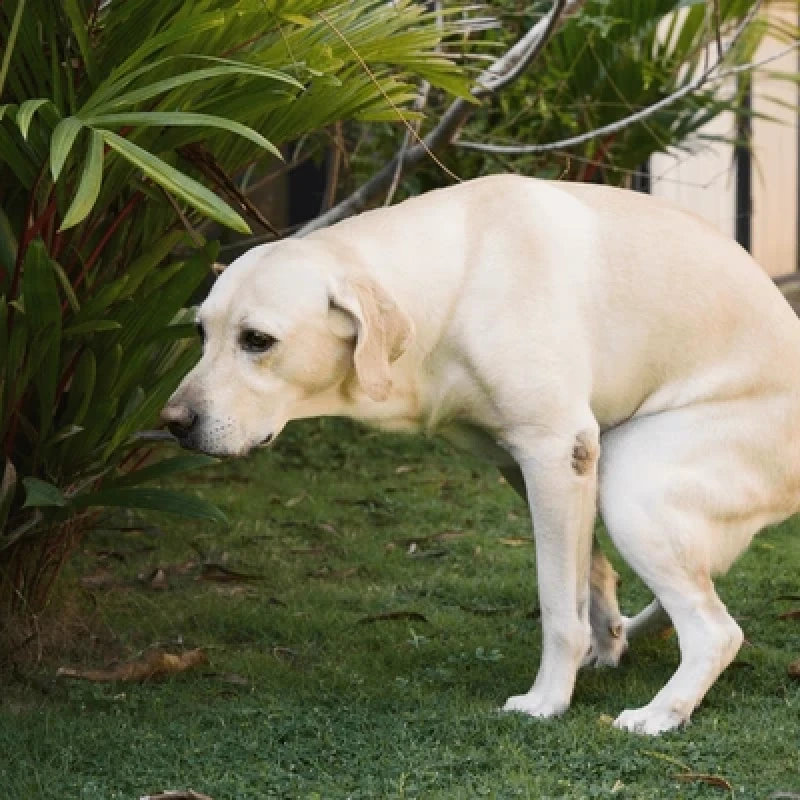Caring for a 2-month-old Alaska puppy is drawn from the experiences of experienced owners. Pet Mart will share some valuable tips with those who love this sled dog breed. This is a crucial age for puppies; with proper care, Alaskan Malamutes will grow up healthy and live longer.

A Brief Overview of the Alaska Dog Breed
The Alaska dog, also known as the Alaskan Malamute, is related to the Husky breed. These snow dogs live in the frigid Arctic regions and are used for pulling sleds over vast expanses of snow. Currently, this breed comes in three basic sizes, which increase in size:
- Standard Alaska Dog
- Large Standard Alaska Dog
- Giant Alaska Dog
They come in various colors, including black and white, gray and white, red and brown, and white. They have a very thick coat that can withstand extremely cold weather, which also makes grooming them quite challenging.
Currently, this breed is very popular in Vietnam. However, due to climate differences, caring for a puppy is not simple, especially when it comes to choosing food for the Alaska dog. They are not particularly picky eaters, but improper nutrition can lead to health issues and a shortened lifespan.
Check the Origin of the Alaska Puppy Before Buying
You should thoroughly investigate the origin of the Alaskan Malamute puppy. The price for a puppy is not cheap. To avoid “money lost and trouble gained,” it's best to do your research. If possible, visit breeding farms or the dog's owner to observe. Choose a puppy that is lively and healthy. It’s advisable to buy puppies born in Vietnam so they are acclimated to the climate, making care easier.
If you are considering a puppy imported from China, it's best not to adopt one, as they are likely to get sick after a long journey. If you have the means, adopting an older dog would be safer. Most of the imported dogs in Vietnam are from China.
What is the Lowest Price for an Alaska Puppy?
Currently, newly born Alaska puppies at dog breeding farms are usually pre-ordered. Therefore, if you want to buy this breed, you need to act quickly to acquire a quality one.
Some sellers offer Alaska puppies at extremely low prices, even below 1 million VND. However, such offers are highly unreliable, as there are no Alaska puppies priced that low. You can refer to the price list for 2-month-old Alaska puppies sold at reputable breeding farms in Hanoi and Ho Chi Minh City as follows:
Buying Alaska Puppies Born in Vietnam
Alaska puppies born domestically are mainly categorized into two types based on size: Standard Alaska and Giant Alaska.
Standard Alaska Dog (approximately 40–50 kg when fully grown): priced between 9–13 million VND. The specific price varies mainly by color. Black and white Alaska dogs are the most common and are priced around 9–11 million VND. Red and brown Alaska dogs, being more popular, are priced around 11–13 million VND. Rare colors like pink and gray have higher prices, around 13–16 million VND.
Giant Alaska Puppy (approximately 50–70 kg): priced between 16–19 million VND. The price of Giant Alaska puppies depends less on color and more on their quality.
Buying Imported Alaska Puppies
Alaska puppies imported from Thailand are considered high-quality stock for breeding farms. Thai imports are divided into two main categories:
Thai Imported Alaska Puppies without FCI Papers: priced around 16–20 million VND for Standard size and 20–27 million VND for Giant size.
Thai Imported Alaska Puppies with Full FCI Papers: priced around 20–25 million VND for Standard size and 25–35 million VND for Giant size.
Alaska puppies imported from Europe, primarily from Russia, Ukraine, and Serbia, are considered premium dogs with near-perfect purity. Most have full FCI papers. The main price difference lies in their lineage.
Purebred European imported Alaska dogs with normal lineage range from 45–60 million VND upon arrival in Vietnam. Purebred dogs with champion lineage from prestigious breeding farms can cost between 60–100 million VND.
Hygiene When Raising a 2-Month-Old Alaska Puppy
Regardless of the breed, you need to keep your puppy and their living environment clean. Maintaining cleanliness contributes to the dog's health. Daily, you should clean the kennel and the food bowls to prevent the presence of bacteria and parasites, which can hide anywhere.
If you have a kennel for the dog and sometimes confine them, it must be well-ventilated. In winter, consider buying a mat or bedding to keep the puppy warm.
Newly adopted puppies should not be taken out for walks. During the first ten days, the best approach for raising a 2-month-old Alaska puppy is to keep them indoors, allowing them to get accustomed to their environment, especially the yard. This helps them feel safe and less anxious.
Regarding training a 2-month-old Alaska puppy, it’s important to start familiarizing and teaching them. Training them to relieve themselves in the right spot and obey commands will make your life much easier as they grow.
Vaccination for 2-Month-Old Alaska Puppies
Usually, the seller will inform you that the puppies have received two shots for seven diseases. However, many do not get vaccinated. The method of raising a 2-month-old Alaska puppy differs from that of an adult dog. Vaccination is essential. It’s best not to vaccinate immediately but to wait 2–3 days until the puppy is more acclimated and has recovered their health.
Also, ensure it is not more than three weeks after they have been separated from their mother. When separating at around 2 months of age, if the puppy contracts Parvo or Care, their chances of survival are very slim. You should also ensure the puppy is dewormed to eliminate intestinal parasites and monitor their health periodically as per your veterinarian's guidance.
Nutrition for Alaska Puppies
Building a Diet for a 2-Month-Old Alaska Puppy
There are many ways to build a suitable and scientific diet for this breed. You can prepare homemade food for them, but this will take a lot of your time. If the food is not to their taste, they may refuse to eat, which wastes your effort.
Unlike other breeds like Poodles, Pekingese, German Shepherds, or Pugs, the food for Alaska dogs has specific characteristics. Being a working breed, they require a substantial amount of energy daily, necessitating more food.
When they are young, you can feed them multiple times a day: morning, noon, afternoon, and evening. Gradually, you can reduce the number of meals while increasing the portion size for each meal. A 2-month-old Alaska puppy can be given "complementary" foods. It’s also essential to use digestive enzymes and supplement calcium for optimal growth. Note that you should not feed them raw, fishy, salty, or fatty foods, as these can be harmful to their health and digestive system.
When you first bring the puppy home, they may not be accustomed to the feeding method. Before acquiring the puppy, you should ask the previous owner about their diet. The safest way to raise a 2-month-old Alaska puppy is to continue feeding them the same diet as at their previous home. Once they are comfortable, you can adjust their diet accordingly.
Notes When Feeding a 2-Month-Old Alaska Puppy
Keep in mind not to overfeed your Alaskan dog. They should eat 3 to 4 meals a day. Particularly, you should avoid feeding them fishy, salty, or raw food.
The digestive system of a 2-month-old Alaska puppy is still very weak, making them susceptible to dangerous intestinal diseases. As they grow older, they can chew on bone marrow to strengthen their teeth. You can purchase calcium-rich chewing bones to ensure their safety.
Quality Food for Alaska Dogs
In addition to preparing homemade meals for your Alaska dog, you should consider incorporating high-quality kibble into their diet. These are pre-packaged foods that provide balanced nutrition. You can confidently feed these to Alaska puppies aged 2 months and older. Simply soak the dry food in a little water or milk, and your puppy will enjoy delicious and nutritious meals.
Introducing dry food to a 2-month-old Alaska puppy offers numerous benefits for both you and your pet. You can save a significant amount of money and time while ensuring your puppy receives all the essential nutrients throughout their lifetime, from puppyhood to adulthood.
For Alaska puppies 2 months and older, you can choose from several reputable brands, such as Royal Canin, MOSHM, MEC, and ANF. These foods are recommended by nutrition experts and are produced according to international quality standards, making them very safe.
Additionally, you can vary your puppy’s diet by mixing wet and dry foods together. Popular options among pet owners include wet foods, pâtés, sausages, and sauces like Jerhigh and IRIS.
Grooming Care for Alaska Dogs
The grooming care for a 2-month-old Alaska puppy regarding skin and coat is similar to that of Huskies and Samoyeds. They have a thick and dense coat, and the beauty of this breed is often judged by the quality of their fur. To maintain a beautiful coat, you need to invest time in grooming them regularly, starting from a young age.
When bathing your dog, avoid using human shampoo as its high pH can cause the dog’s coat to become tangled and rough. Instead, use specialized pet shampoo. For proper bathing techniques for puppies, you can refer to petmart.vn. Be sure to dry their coat and clean their ears and nails to prevent skin infections, colds, and kennel cough.
In addition to bathing a 2-month-old Alaska puppy to create a habit from an early age, you also need to regularly trim their fur. This ensures your puppy always has a soft, tidy, and non-tangled coat. If you don't have time to groom them, you can check out dog grooming services at Pet Mart.
I hope these tips for raising a 2-month-old Alaska puppy help you care for your furry friend. Wishing you success!








